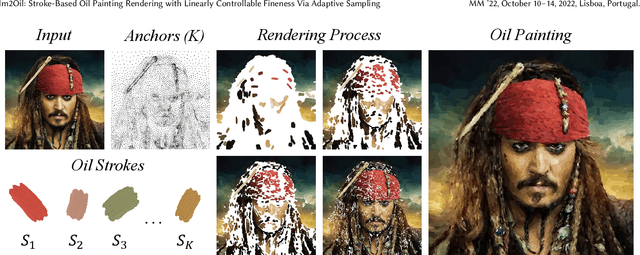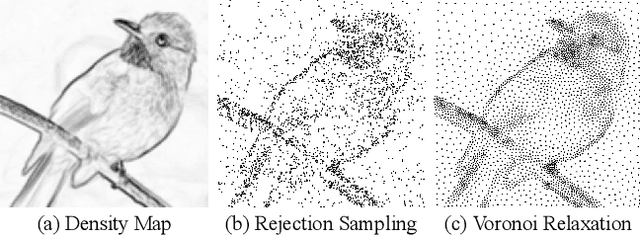Shengchao Yuan
SieveNet: Selecting Point-Based Features for Mesh Networks
Aug 24, 2023Abstract:Meshes are widely used in 3D computer vision and graphics, but their irregular topology poses challenges in applying them to existing neural network architectures. Recent advances in mesh neural networks turn to remeshing and push the boundary of pioneer methods that solely take the raw meshes as input. Although the remeshing offers a regular topology that significantly facilitates the design of mesh network architectures, features extracted from such remeshed proxies may struggle to retain the underlying geometry faithfully, limiting the subsequent neural network's capacity. To address this issue, we propose SieveNet, a novel paradigm that takes into account both the regular topology and the exact geometry. Specifically, this method utilizes structured mesh topology from remeshing and accurate geometric information from distortion-aware point sampling on the surface of the original mesh. Furthermore, our method eliminates the need for hand-crafted feature engineering and can leverage off-the-shelf network architectures such as the vision transformer. Comprehensive experimental results on classification and segmentation tasks well demonstrate the effectiveness and superiority of our method.
Im2Oil: Stroke-Based Oil Painting Rendering with Linearly Controllable Fineness Via Adaptive Sampling
Sep 27, 2022



Abstract:This paper proposes a novel stroke-based rendering (SBR) method that translates images into vivid oil paintings. Previous SBR techniques usually formulate the oil painting problem as pixel-wise approximation. Different from this technique route, we treat oil painting creation as an adaptive sampling problem. Firstly, we compute a probability density map based on the texture complexity of the input image. Then we use the Voronoi algorithm to sample a set of pixels as the stroke anchors. Next, we search and generate an individual oil stroke at each anchor. Finally, we place all the strokes on the canvas to obtain the oil painting. By adjusting the hyper-parameter maximum sampling probability, we can control the oil painting fineness in a linear manner. Comparison with existing state-of-the-art oil painting techniques shows that our results have higher fidelity and more realistic textures. A user opinion test demonstrates that people behave more preference toward our oil paintings than the results of other methods. More interesting results and the code are in https://github.com/TZYSJTU/Im2Oil.
 Add to Chrome
Add to Chrome Add to Firefox
Add to Firefox Add to Edge
Add to Edge